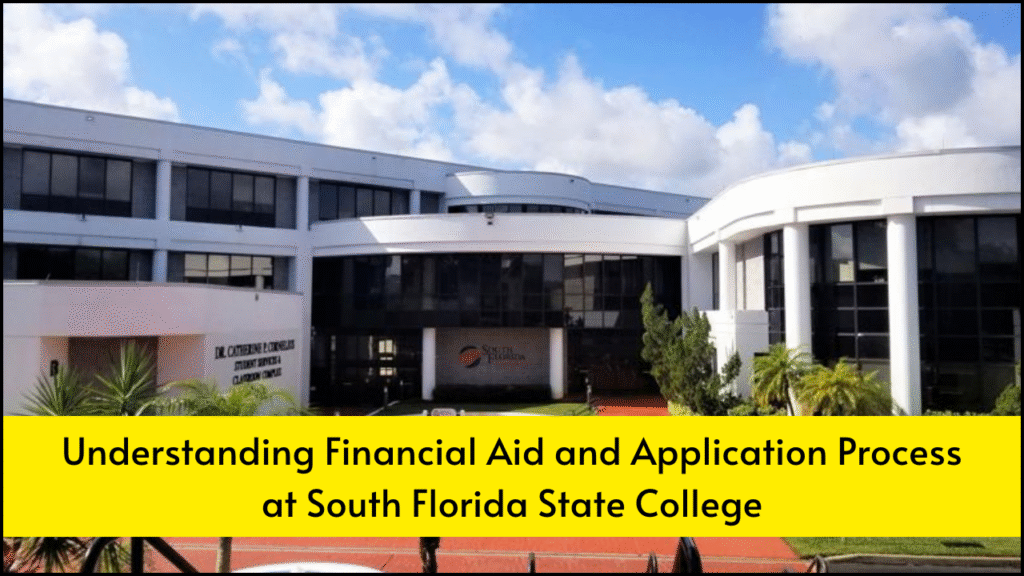
Financial aid plays a central role in making education affordable and accessible for students from different backgrounds. Rising tuition fees and living expenses often create barriers, but financial support systems provide relief through grants, scholarships, and loans. Proper awareness of eligibility requirements, application steps, and available options helps students and families plan wisely. This article explains the financial aid process in detail, including application procedures, important contacts, and common mistakes to avoid.
Table of Contents
Overview of Financial Aid
- Financial aid supports students who cannot cover full educational costs.
- Aid may come in the form of federal grants, state programs, institutional scholarships, or federal loans.
- About 80 percent of students receive some kind of financial assistance.
- The process begins with filing the Free Application for Federal Student Aid (FAFSA).
- Aid amounts vary based on financial need, enrollment status, and academic eligibility.
Types of Financial Aid Available
- Federal Grants – Money awarded based on need; does not require repayment.
- State Grants – Support provided by state governments for residents meeting specific conditions.
- Institutional Scholarships – Awards given by colleges or universities based on merit, talent, or need.
- Federal Loans – Borrowed money that must be repaid with interest, but usually with flexible repayment terms.
- Work-Study Programs – Opportunities allowing students to earn money through part-time jobs on campus.
Eligibility Requirements
- Must be a degree-seeking student enrolled in an approved program.
- Submission of all academic transcripts from previously attended schools is mandatory.
- Financial need is determined by the information provided in the FAFSA form.
- Students must maintain satisfactory academic progress (SAP) to continue receiving aid.
- Aid may differ depending on residency, household income, and the number of family members enrolled in college.
Step-by-Step Application Process
- Step 1: File the FAFSA
- Submit the Free Application for Federal Student Aid online.
- Use accurate details about income, assets, and household size.
- Apply early for better chances of receiving maximum benefits.
- Step 2: Submit Academic Transcripts
- Provide records from all previously attended institutions.
- Allow time for transcript evaluation.
- Step 3: Wait for Processing
- Applications usually take five to seven business days to process.
- Students will receive emails with further instructions.
- Step 4: Review Award Letter
- Aid offers will outline grants, loans, or work-study options.
- Students may accept or decline specific awards.
- Step 5: Complete Admission and Enrollment
- Follow the instructions provided in emails.
- Meet deadlines to avoid delays in disbursement.
Key Contacts for Financial Aid Assistance
- Financial Aid Office
- Location: Welcome Center, Building B, Highlands Campus
- Phone: 784-7134
- Email: finaid@southflorida.edu
- Admissions Application Assistance
- Contact Person: Tasha Morales
- Phone: 863-784-7401
- Email: MoralesT@southflorida.edu
Important Timelines
- Early filing of FAFSA is highly recommended.
- Processing time takes 5–7 business days.
- Students should submit documents well before semester deadlines.
- Late applications may result in reduced funding.
Comparison of Financial Aid Options
| Type of Aid | Repayment Required | Eligibility Basis | Example |
|---|---|---|---|
| Federal Grant | No | Financial need | Pell Grant |
| State Grant | No | Residency and financial need | Florida Student Assistance Grant |
| Institutional Scholarship | No | Academic merit or special talent | Academic Excellence Award |
| Federal Loan | Yes | FAFSA & enrollment status | Direct Subsidized/Unsubsidized Loan |
| Work-Study Program | No (but work required) | FAFSA & availability | On-campus library or lab assistant |
Tips for a Successful Application
- File the FAFSA as soon as it opens each year.
- Double-check all entered information before submitting.
- Keep copies of tax returns and financial documents ready.
- Respond promptly to requests for additional documents.
- Seek guidance from the Financial Aid Office if unsure.
Common Mistakes to Avoid
- Missing application deadlines.
- Submitting incomplete or incorrect FAFSA details.
- Forgetting to sign electronically before submission.
- Overlooking transcript submission requirements.
- Ignoring emails with next-step instructions.
Benefits of Applying Early
- Higher likelihood of securing the maximum available aid.
- Reduced stress with more time to resolve errors.
- Early awareness of funding helps with budget planning.
- Priority consideration for state and institutional programs.
Other Important Information
- Financial aid amounts may change each academic year.
- Aid renewal requires submission of a new FAFSA annually.
- Students must notify the Financial Aid Office if their financial situation changes.
- Some programs may require additional forms beyond FAFSA.
- Scholarships may be renewable if GPA and credit requirements are maintained.
Final Thoughts
Financial aid ensures that education remains within reach for students from diverse financial backgrounds. A clear understanding of eligibility, deadlines, and application steps reduces stress and increases opportunities for support. By filing the FAFSA early, submitting transcripts on time, and staying in contact with the Financial Aid Office, students can secure the assistance needed to focus on their studies and future goals.
Frequently Asked Questions (FAQs)
Q1: Who is eligible for financial aid?
Students must be degree-seeking, maintain academic progress, and demonstrate financial need as determined by FAFSA.
Q2: Is FAFSA mandatory for all aid programs?
Yes, FAFSA is the entry point for federal, state, and most institutional aid.
Q3: How long does it take to receive aid after applying?
Processing typically takes 5–7 business days, followed by award notification through email.
Q4: Can international students apply for FAFSA?
No, FAFSA is limited to U.S. citizens and eligible noncitizens, but institutions may offer separate scholarships.
Q5: Do students have to repay grants or scholarships?
No, only loans require repayment. Grants and scholarships are considered free aid.
Q6: Where can students get help with the FAFSA?
The Financial Aid Office at the Welcome Center, Building B, Highlands Campus provides assistance via phone, email, or in-person visits.





